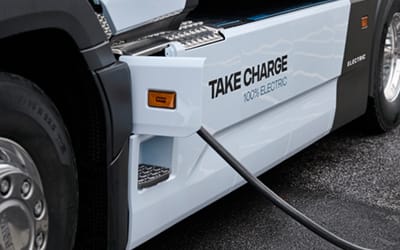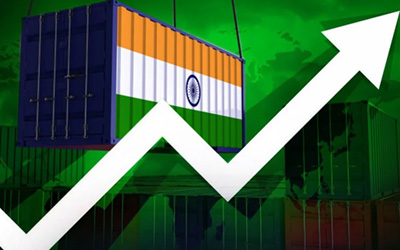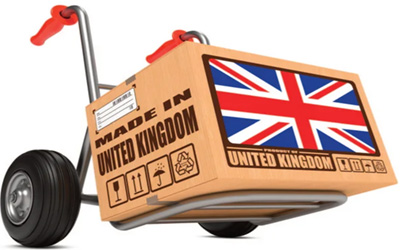Wind-Powered Cargo Ships: A Step Towards Sustainable Shipping
The maritime industry is on the brink of a significant transformation, as a cargo ship equipped with revolutionary British-designed rigid sails embarks on its maiden voyage. This technological innovation, developed by the shipping firm Cargill, marks a pivotal moment in the pursuit of greener, more sustainable shipping practices.
Pioneering Wind Wings Technology for Greener Shipping
 The sails, known as Wind Wings, are engineered to significantly reduce fuel consumption, thereby lowering the carbon footprint of shipping vessels. As the global shipping industry accounts for approximately 2.1% of global carbon dioxide (CO2) emissions, this innovation offers a promising solution to one of the world’s most pressing environmental challenges.
The sails, known as Wind Wings, are engineered to significantly reduce fuel consumption, thereby lowering the carbon footprint of shipping vessels. As the global shipping industry accounts for approximately 2.1% of global carbon dioxide (CO2) emissions, this innovation offers a promising solution to one of the world’s most pressing environmental challenges.
The maiden journey of the Pyxis Ocean, which began in China and will conclude in Brazil, serves as the first real-world test of the Wind Wings technology. This voyage represents a crucial opportunity to evaluate whether a return to wind-assisted propulsion—a method rooted in the early days of seafaring—could play a key role in the future of maritime cargo transport.
How Wind Wings Work: A Blend of Tradition and Innovation
The Wind Wings are designed to fold down when the ship is docked and extend to their full height of 123 feet (37.5 meters) once the vessel is in open waters. Constructed from the same durable materials as wind turbines, these sails are built to withstand the harsh conditions at sea.
By harnessing wind power, the Wind Wings reduce the vessel’s reliance on its engine, potentially cutting lifetime emissions by up to 30%. Jan Dieleman, president of Cargill Ocean Transportation, emphasised that while there is no “silver bullet” for decarbonising the shipping industry, this technology is a significant step forward.
Decarbonizing the Shipping Industry: Challenges and Opportunities
The push for decarbonisation in the shipping industry has gained momentum in recent years. Dieleman noted that just five years ago, the idea of decarbonising shipping seemed far-fetched to many. Today, however, there is widespread recognition of the need to address the industry’s environmental impact, though questions remain about the best path forward.
Cargill has taken a leadership role in this effort by underwriting some of the risks associated with pioneering new technologies like Wind Wings. The Pyxis Ocean’s six-week voyage will provide valuable data on the effectiveness of this wind propulsion system and its potential to revolutionize the industry.
From Formula One to the High Seas: The Origin of Wind Wings
 The Wind Wings technology was developed by UK-based BAR Technologies, a company that emerged from Sir Ben Ainslie’s 2017 America’s Cup team, often referred to as the ‘Formula One of the seas.’ John Cooper, the head of BAR Technologies and a former Formula One engineer, described this project as one of the slowest-moving yet most impactful endeavours his team has undertaken.
The Wind Wings technology was developed by UK-based BAR Technologies, a company that emerged from Sir Ben Ainslie’s 2017 America’s Cup team, often referred to as the ‘Formula One of the seas.’ John Cooper, the head of BAR Technologies and a former Formula One engineer, described this project as one of the slowest-moving yet most impactful endeavours his team has undertaken.
Cooper predicts that by 2025, half of all new cargo ships will be equipped with wind propulsion systems. His confidence stems from the impressive fuel savings Wind Wings can deliver up to one and a half tonnes of fuel per day with a single wing, translating to six tonnes saved with four wings. This reduction in fuel use equates to a daily saving of 20 tonnes of CO2 emissions, showcasing the substantial environmental benefits of the technology.
The Manufacturing Challenge: A Missed Opportunity for the UK
While the Wind Wings were designed in the UK, they are manufactured in China due to the lower cost of imported steel. Cooper expressed regret that the UK government has not provided sufficient support to reduce manufacturing costs domestically, which would have allowed production to remain in the UK. Nevertheless, the global impact of the technology remains the focus, as the maritime industry seeks to reduce its estimated 837 million tonnes of CO2 emissions annually.
 Wind Power: A Promising Future for Maritime Decarbonization
Wind Power: A Promising Future for Maritime Decarbonization
Wind power is emerging as a viable solution for reducing the shipping industry’s carbon emissions. In July, the industry agreed to aim for road to net-zero greenhouse gas emissions “by or around 2050,” though critics argue that more immediate action is needed.
Dr Simon Bullock, a shipping researcher at the Tyndall Centre at the University of Manchester, emphasised the importance of operational measures like retrofitting existing ships with sails, kites, and rotors. While the ultimate goal is zero-carbon fuels for all vessels, making every journey as efficient as possible is crucial in the interim. Reducing speeds is also a key part of the solution.
Stephen Gordon, managing director of maritime data firm Clarkson’s Research, noted that wind-related technologies are gaining traction, with the number of ships using such technology doubling over the past year. However, wind assisted propulsion is still in its early stages, with fewer than 100 of the more than 110,000 vessels in the international shipping fleet currently equipped with this technology.
The Future of Wind-Assisted Shipping
Despite the challenges, John Cooper of BAR Technologies remains optimistic about the future of wind-assisted shipping. He believes that wind wings represent a return to the industry’s roots, where wind was the primary source of propulsion for ships. However, he acknowledges that the modern application of this age old method requires a blend of innovation and tradition.
As the shipping industry continues to explore various pathways to decarbonisation, wind assisted propulsion stands out as a promising option. While it may not be suitable for all vessels particularly those where sails could interfere with cargo operations it offers a significant opportunity to reduce emissions in a sector that is critical to global trade.
The journey of the Pyxis Ocean is more than just a test of new technology; it is a symbol of the maritime industry’s commitment to a more sustainable future. As the world grapples with the challenges of climate change, innovations like Wind Wings could play a vital role in steering the shipping industry towards a greener horizon.
FAQ

What is the dead weight of the Pyxis Ocean?
The vessel has callsign 9V2598. Summer deadweight is 80962 DWT.
Who owns the Pyxis Ocean?
Pyxis Ocean is a Kamsarmax bulk carrier vessel owned by Mitsubishi Corporation and fitted with wind-propulsion technology designed by British company BAR Technologies.
What was the worlds first wind powered freighter?
The Pyxis Ocean vessel, was retrofitted with two Wind Wings, which are large wing sails that can be fitted to the deck of cargo ships to harness wind power. The sails measure up to 123 feet and are expected to generate average fuel savings of up to 30 percent on newly built vessels.
SARR Logistics UK
With a legacy built on trust, backed by extensive experience, a global network, and a customer-centric approach, SARR Logistics UK emerges as the ultimate partner for all your supply chain mapping needs. We are in touch with the latest cloud base systems and tracking systems, if you would like to know more reach out to us today and experience a seamless, efficient, and dependable shipping solution tailored to elevate your business. For further inquiries and to explore how SARR Logistics UK can help you contact our team today.![]()


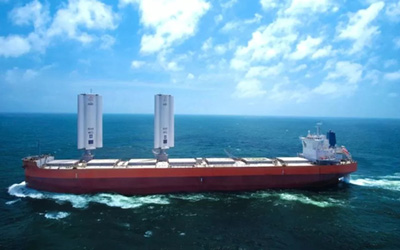
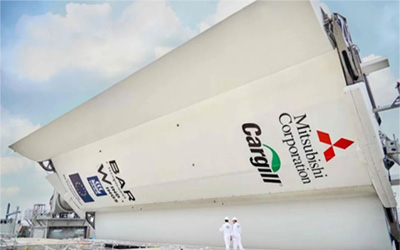 Wind Power: A Promising Future for Maritime Decarbonization
Wind Power: A Promising Future for Maritime Decarbonization


